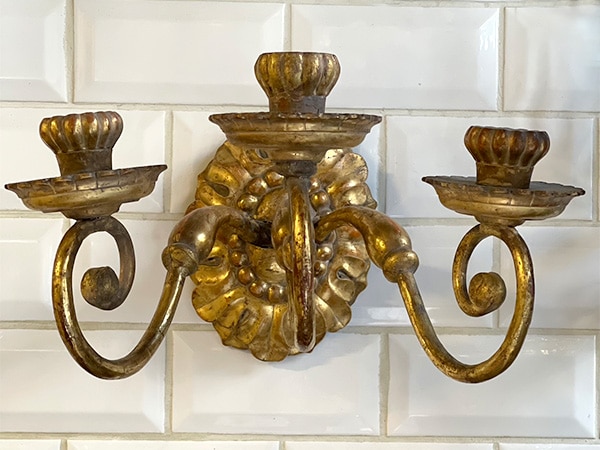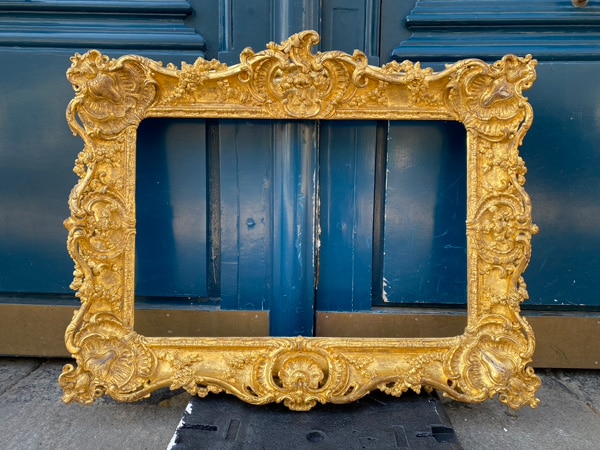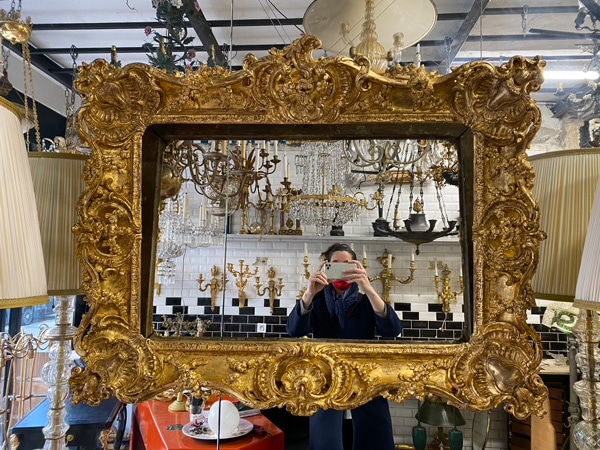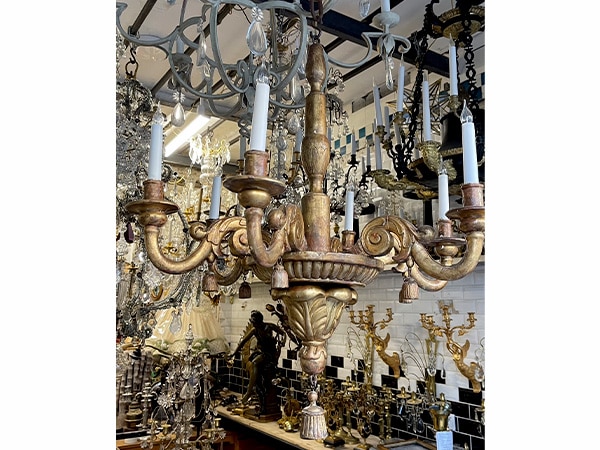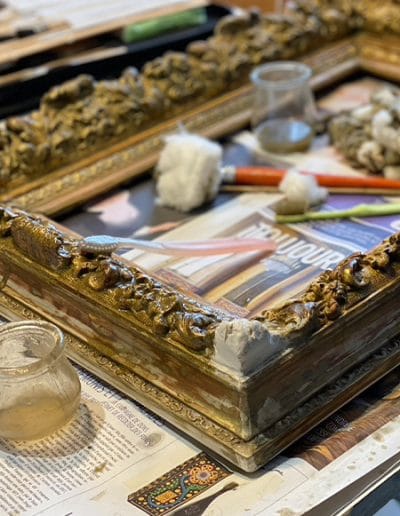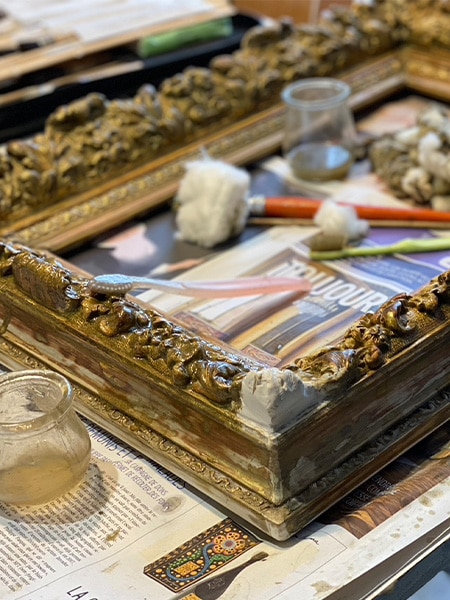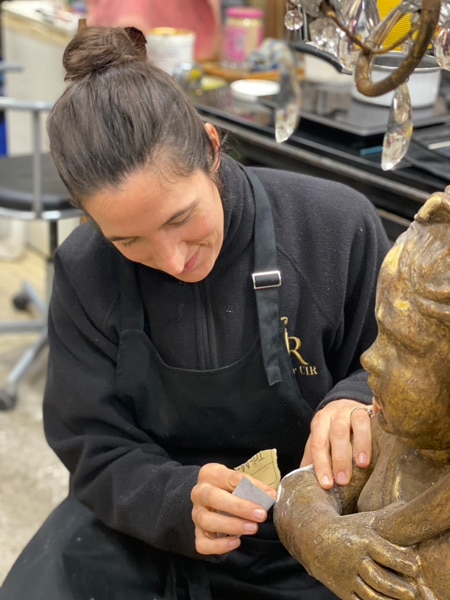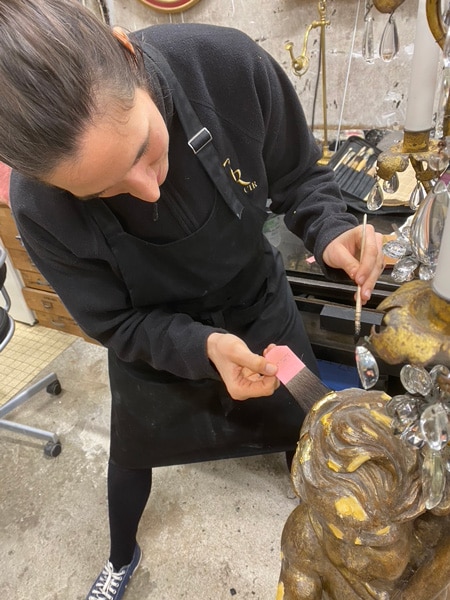
Wood Gilder in the Heart of Paris
Are you looking for a wood gilder company in Paris? Welcome to Atelier CIR workshop.
We are experts in restoring works of art such as chandeliers, century-old and contemporary lighting fixtures (Golden Age, 17th, 18th, 19th or 20th centuries), original gilded wood pieces and bronze items.
We restore goods using French and craftsman techniques.
Gilding workshop
Our Paris-based gilding workshop restores your gilded wood pieces using the so-called water-gilding traditional process as well as the oil gilding technique.
Water-Gilding
This traditional technique requires the mastering of a century-old expertise, a good deal of patience and precision. A set of preliminary steps are needed to prepare wood surfaces before applying gold leaf such as laying white primer, a mix of rabbit skin glue and white of Spain. We also prepare the base which will later be gilded, a key part of the water gilding process. The base is a colored clay paste (yellow, red or black).
The water-gilding technique can produce light effects on your object when applying brown and matte waxes. Our wood gilding work is made with gold leaf. This craftsman process brings your piece of art back to its former glory.
This technique can be used to restore both old and contemporary items.


Wood Gilding Restoration
Time, transport, touching, deteriorate wood items. Gilding, which make prestigious goods so unique, ends up being tarnished, chipped if not removed.
Restoring your good will make it bright again and bring it back to its original beauty.
Frames, chairs, consoles, old furniture, gilded wooden chandeliers, decorative items such as putti.
All these wooden works of art need to have their gilding restored.
Here’s a couple of restoration works on gilding we do.
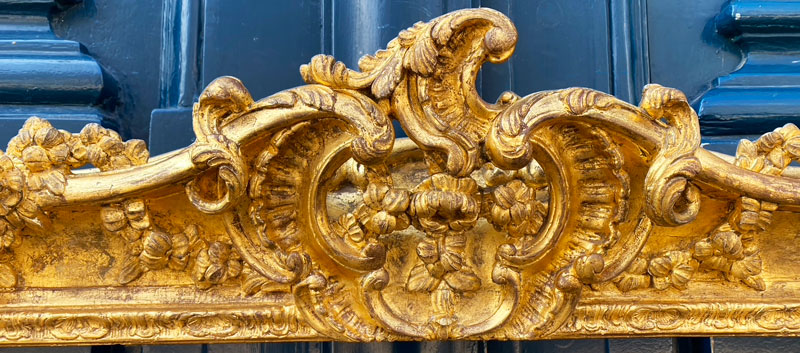
Oil Gilding (gilding paste)
Oil gilding is an alternative technique developed in the 19th century consisting in applying a layer of varnish on treated wood. Then the leaf is laid out directly on the coat of varnish.
Contrary to water-gilding technique, with oil gilding, all the preparatory work outlined above is not required. This technique is specifically used on smooth surfaces withstanding the test of time.

- Gluing prepare the support before gilding and eliminate wood defects.
Applying gold leaf on unfinished wood may result in variations and bring out imperfections. - Sealing is a critical step of restoring old and cracked objects. We apply a special white primer called gesso or whiting powder.
- Priming: apply a primer on the object, a white mixture made of strong glue and chalk.
- Sanding: spread primers evenly on the surface.
- Mold Casting and Restoration of missing or broken (decorative) elements. In order to repair broken elements, we cast part of the object or decor to reproduce and then filled it with gesso to be put on the broken section.
- Re-cutting is the art of restoring designs and decorations hidden under primer layers. We use special irons.
- Cleaning before applying base layers.
- Prepare Bases by applying different colors on them– yellow for hollow elements, red for plates, black on Napoleon III restorations … The mixture we use is made of clay and highly-diluted light glue called adhesive sizing. Layers act as cushions for the golden metal. As a result, burnishing will look even better.
- Chiennage refers to the polishing of bases. This step prepares the support to the burnishing phase.
- Gold leaf application using a pallet and a gilder’s cushion. Laying down gold requires both delicacy and precision.
- Mending to fill in flaws and holes
- Burnishing, polishing process using agate stone which make gold brighter.
- Matting to enhance lighting effects
- Patina


